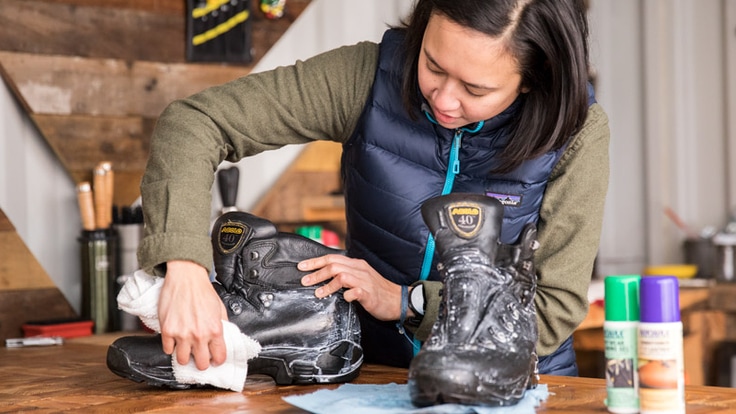Hiking trails don't have a lot of soft edges, so even the most rugged pair of leather boots will eventually look a little ragged. Beyond scuffs and scrapes, boot leather is also susceptible to drying out and cracking. So, to help your boots last longer and perform at their best, you need to clean and condition them regularly.
If your boots have a serious gouge (all the way through), then it's time to take them to a professional cobbler. Some people use Shoe Goo or Super Glue to fill a superficial gouge, but that's a temporary fix and can degrade leather over time. Your better bet is to clean and condition or waterproof the boots, and to think of the gouges as badges of authenticity.
The main steps to conditioning your leather hiking boots are:
- Choosing the appropriate cleaner and conditioner
- Cleaning your boots
- Applying the conditioner
- Drying your boots
Video: How to Care for Leather Boots
Choosing a Cleaner and a Conditioning Treatment
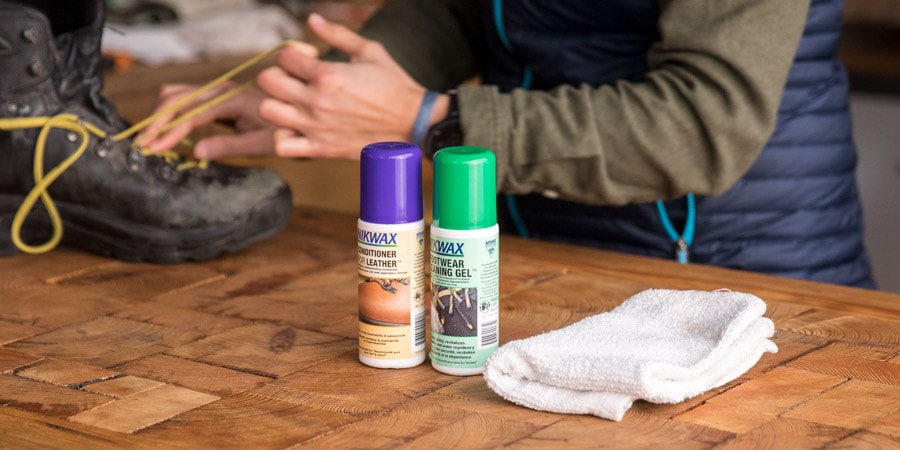
- Footwear products are designed for either full-grain leather or "rough" leathers like suede or nubuck. Read product descriptions carefully before you buy and use a cleaner, conditioner or waterproofing treatment. Note that conditioners, which are designed primarily for full-grain leathers, will also renew the boot's durable water repellent (DWR) finish, which restores waterproof performance. For rough leathers, simply cleaning and re-waterproofing (restoring the DWR) is sufficient.
- Wax-based leather waterproofing treatments, once the norm, are less common now. And if you want the option of resoling your boots later, avoid them because wax residue impairs the ability of a new adhesive to bond with a new sole.
- If your hiking boots have a Gore-Tex® membrane, or a similar waterproof/breathable membrane, no treatment is needed in those areas. Simply clean the fabric in those areas. You can also find products designed to be used on leather/fabric boots.
Cleaning Your Boots
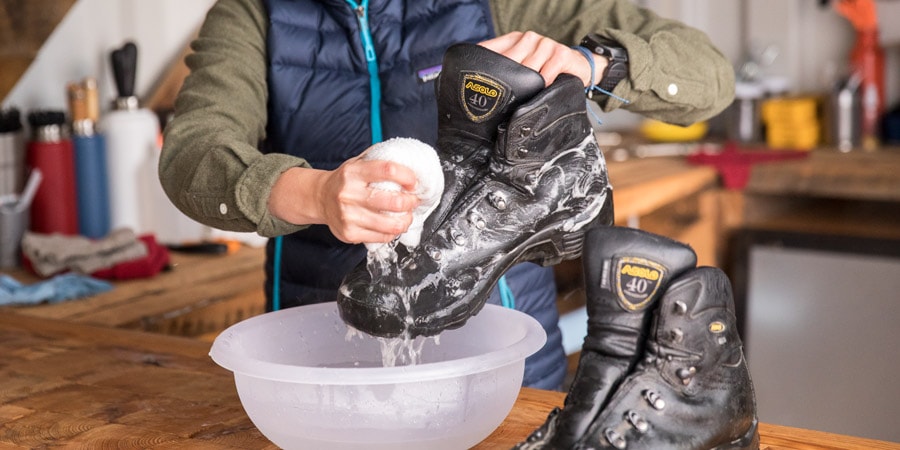
Conditioning and waterproofing products work best on clean, damp boots. You don't want dirt or grit to compromise coverage and penetration and you need water inside that exterior layer of the boots to help draw the waterproofing treatment fully in.
To clean your hiking boots:
- Remove laces prior to cleaning.
- Use a soft brush to gently remove dust and dirt.
- For a more thorough cleaning, add running water and whatever boot cleaner you have chosen.
For more details on how to clean your boots prior to conditioning or waterproofing them, read How to Clean Hiking Boots.
Applying the Conditioner or Waterproofing Treatment
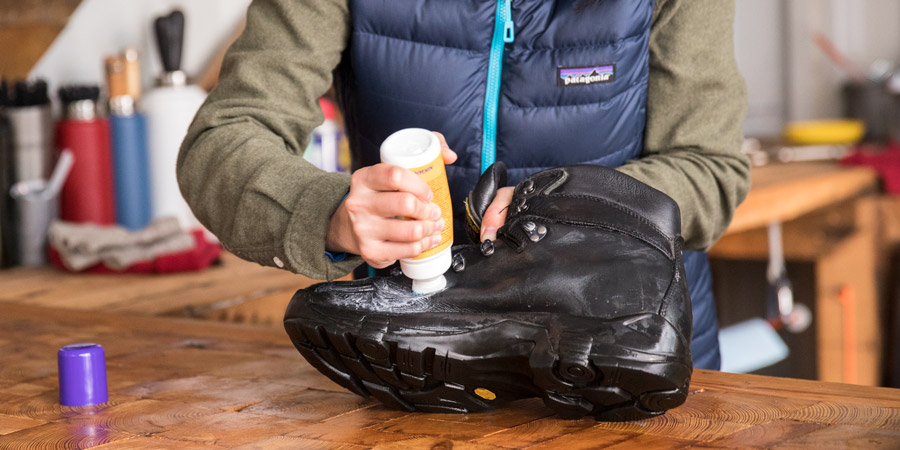
- Make sure that water is soaked fully into the boot leather—applying the treatment immediate after cleaning the leather is ideal.
- If your boots are dry or aren't wet enough after cleaning, wrap a very wet towel around them and let them sit in a utility sink for a couple of hours.
- Once water is fully soaked into your boots, apply the conditioner or waterproofing treatment. Read and carefully follow the application instructions for your product.
Drying and Storing Your Boots
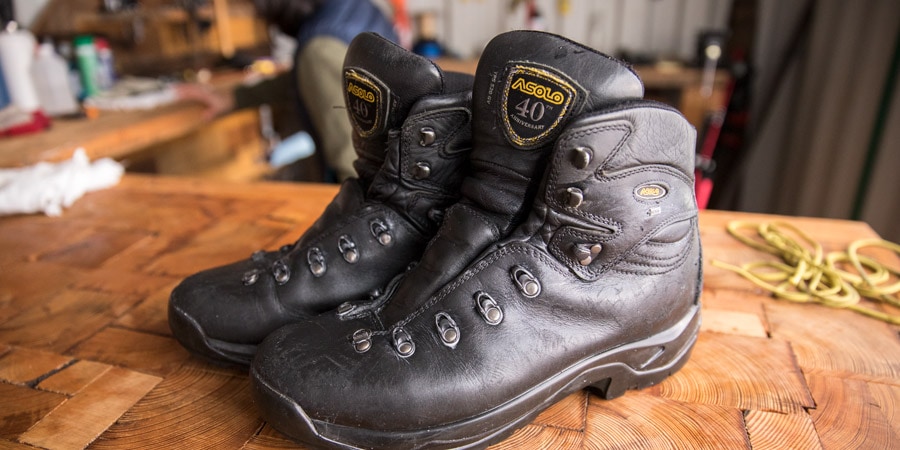
- Dry boots at normal temperature in a place with low humidity.
- Do not use a heat source.
- For quicker drying, use a fan.
- You can also stuff newspaper into the boots to speed drying; change the paper frequently (whenever it's damp).
- Store boots where temperatures are stable and normal. Do not store boots in attics, garages, car trunks or any damp, hot or unventilated place.
